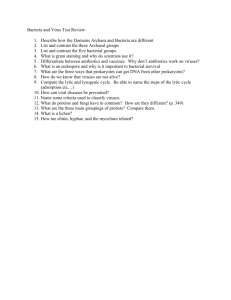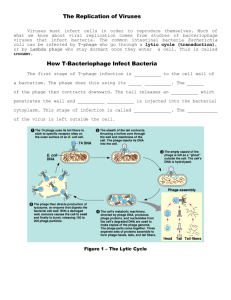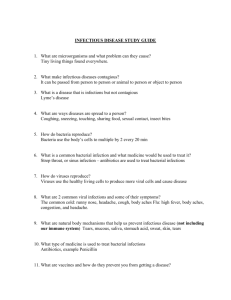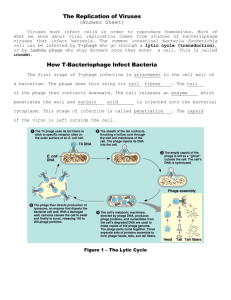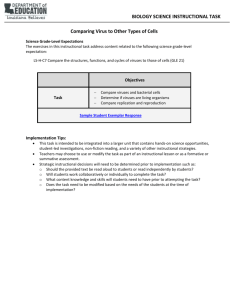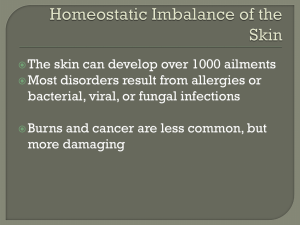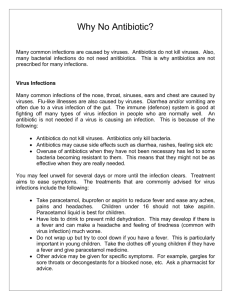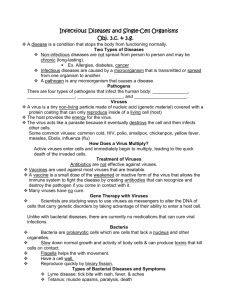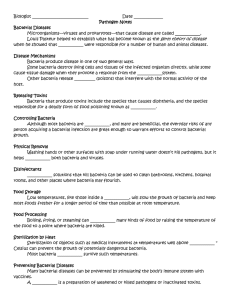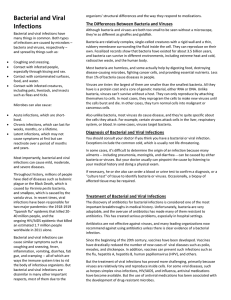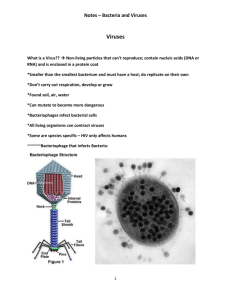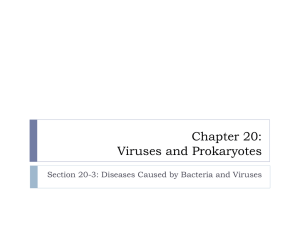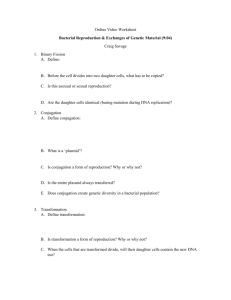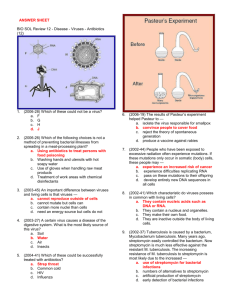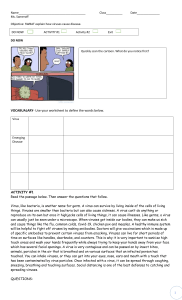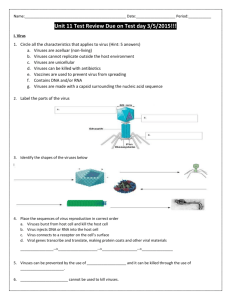Lesson Description
advertisement
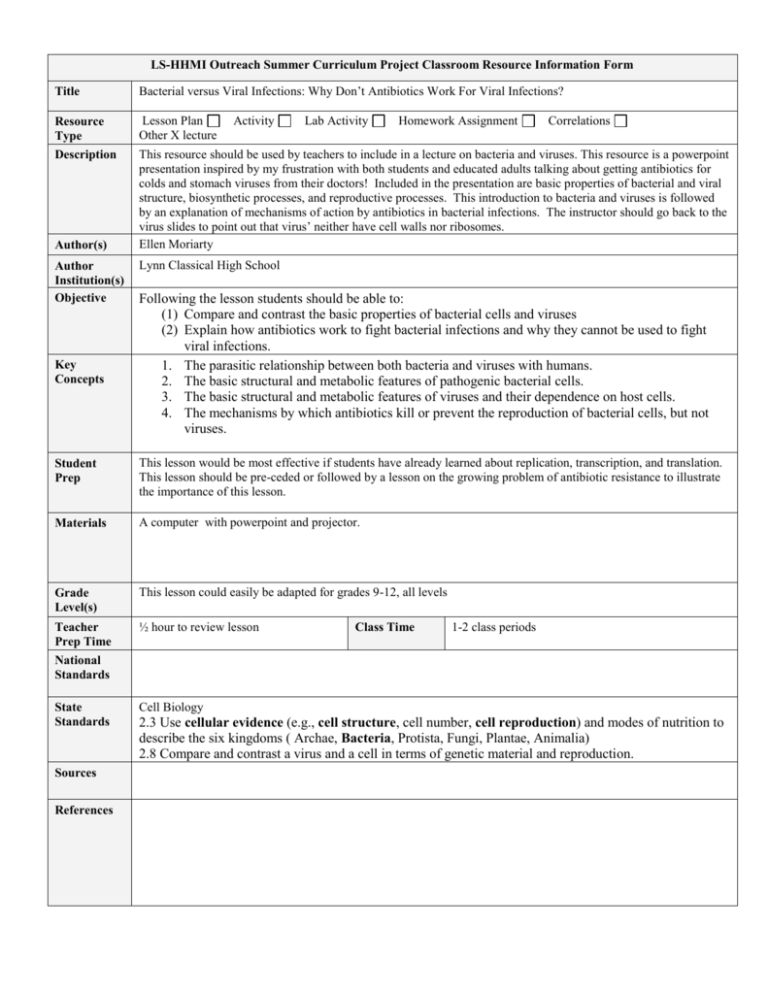
LS-HHMI Outreach Summer Curriculum Project Classroom Resource Information Form Title Bacterial versus Viral Infections: Why Don’t Antibiotics Work For Viral Infections? Resource Type Lesson Plan Other X lecture Description This resource should be used by teachers to include in a lecture on bacteria and viruses. This resource is a powerpoint presentation inspired by my frustration with both students and educated adults talking about getting antibiotics for colds and stomach viruses from their doctors! Included in the presentation are basic properties of bacterial and viral structure, biosynthetic processes, and reproductive processes. This introduction to bacteria and viruses is followed by an explanation of mechanisms of action by antibiotics in bacterial infections. The instructor should go back to the virus slides to point out that virus’ neither have cell walls nor ribosomes. Ellen Moriarty Author(s) Author Institution(s) Objective Key Concepts Activity Lab Activity Homework Assignment Correlations Lynn Classical High School Following the lesson students should be able to: (1) Compare and contrast the basic properties of bacterial cells and viruses (2) Explain how antibiotics work to fight bacterial infections and why they cannot be used to fight viral infections. 1. The parasitic relationship between both bacteria and viruses with humans. 2. The basic structural and metabolic features of pathogenic bacterial cells. 3. The basic structural and metabolic features of viruses and their dependence on host cells. 4. The mechanisms by which antibiotics kill or prevent the reproduction of bacterial cells, but not viruses. Student Prep This lesson would be most effective if students have already learned about replication, transcription, and translation. This lesson should be pre-ceded or followed by a lesson on the growing problem of antibiotic resistance to illustrate the importance of this lesson. Materials A computer with powerpoint and projector. Grade Level(s) This lesson could easily be adapted for grades 9-12, all levels Teacher Prep Time ½ hour to review lesson Class Time 1-2 class periods National Standards State Standards Sources References Cell Biology 2.3 Use cellular evidence (e.g., cell structure, cell number, cell reproduction) and modes of nutrition to describe the six kingdoms ( Archae, Bacteria, Protista, Fungi, Plantae, Animalia) 2.8 Compare and contrast a virus and a cell in terms of genetic material and reproduction. Assessment <Make recommendations for assessment>

